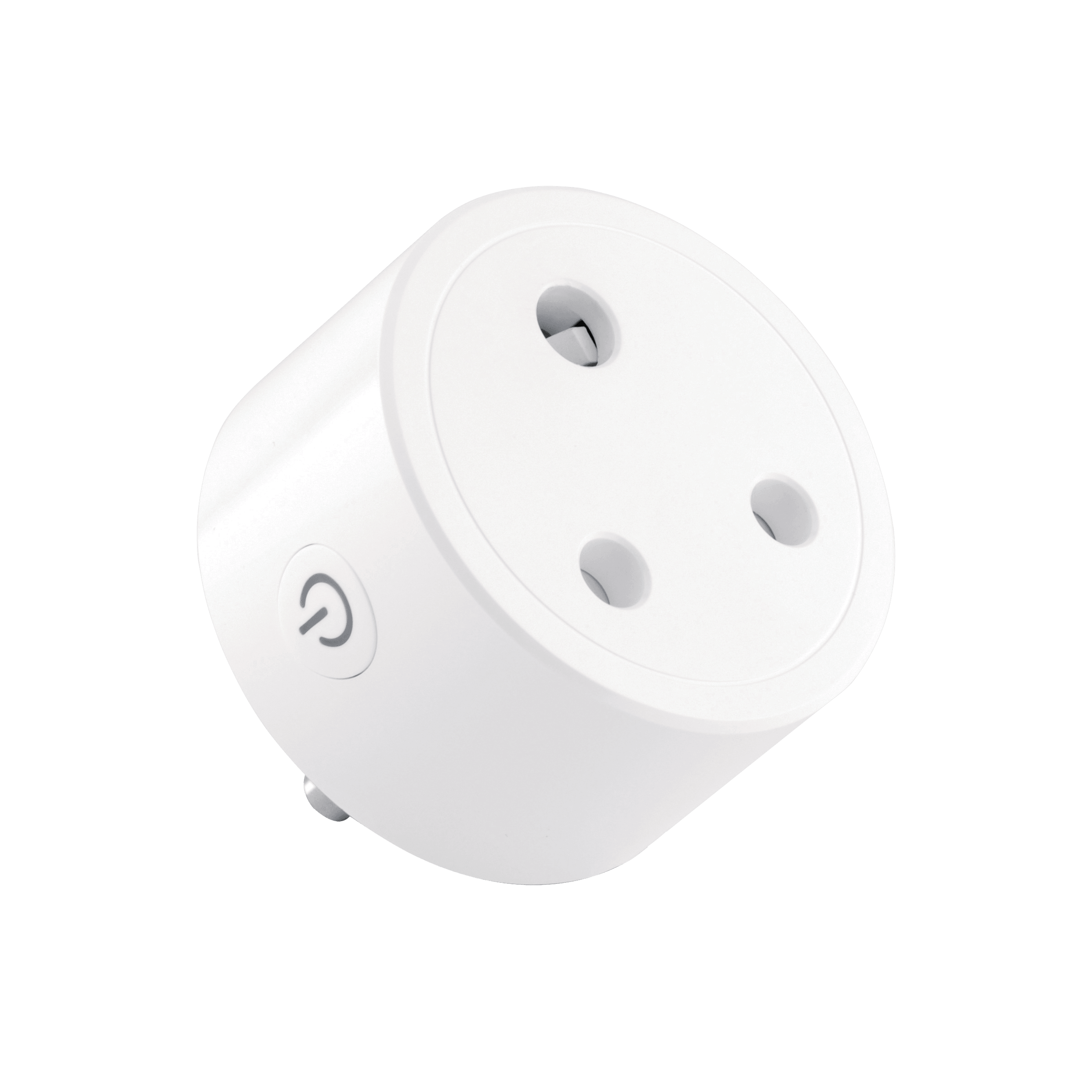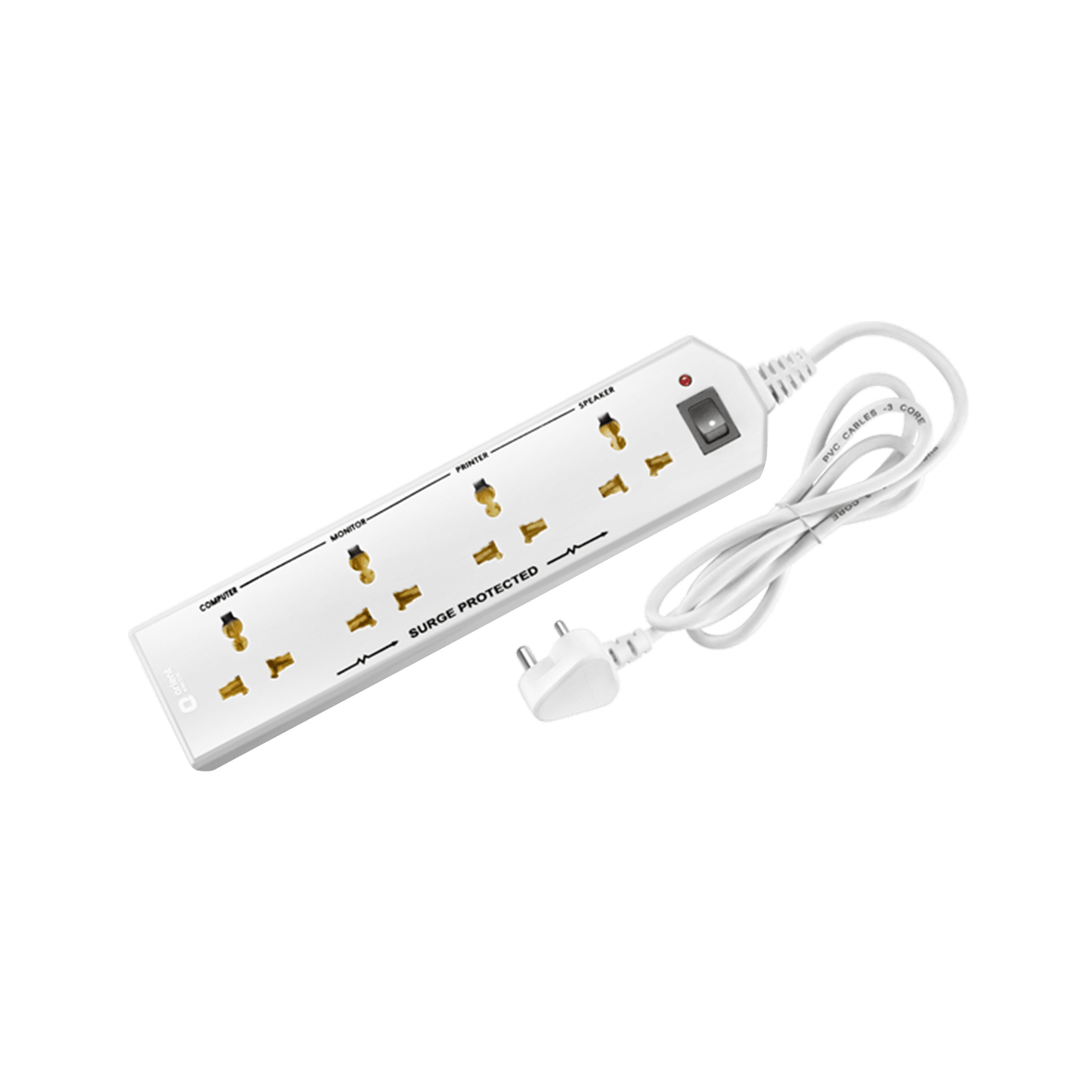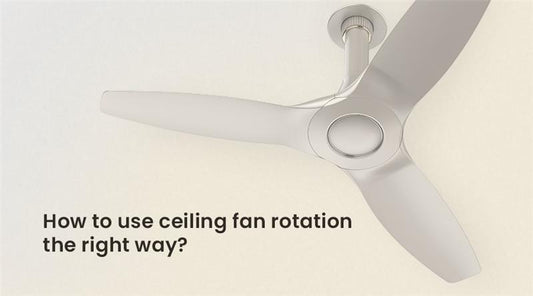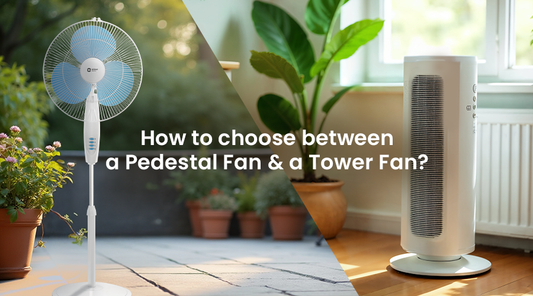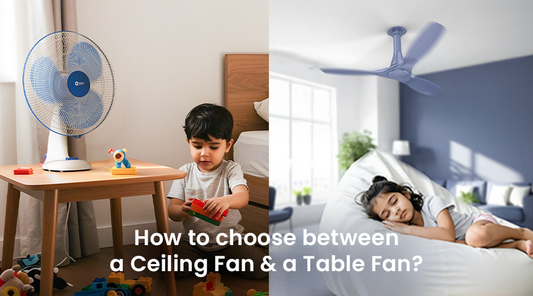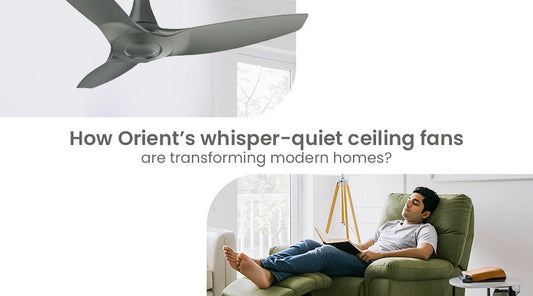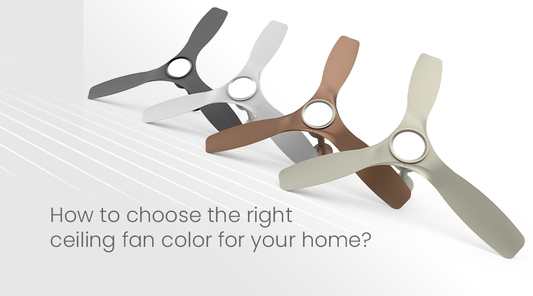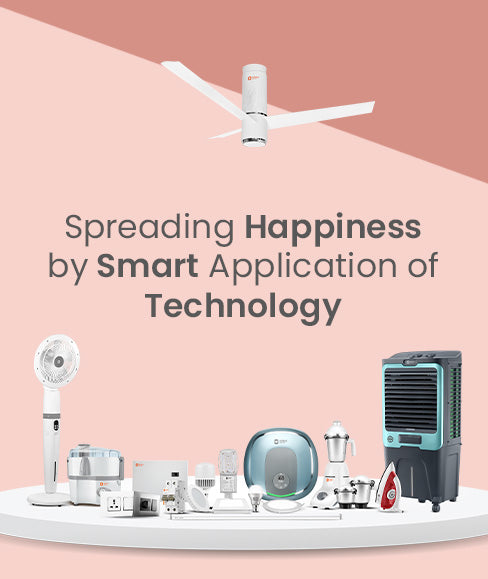
BLDC Fan vs Normal Fan: The Ultimate Buying Guide (2025)

What is a BLDC Fan?
A BLDC (Brushless Direct Current) fan is a modern ceiling fan that uses a brushless motor instead of the traditional induction motor. Compared to normal fans, BLDC fans are significantly more energy-efficient, quieter, longer-lasting, and require less maintenance, though they may cost more upfront. Normal fans consume higher power, generate more heat and noise, and have a shorter lifespan due to brush wear in their motors. According to the Bureau of Energy Efficiency (BEE), switching to BLDC technology can reduce fan-related electricity use by over 50%, making it one of the smartest energy-saving upgrades for Indian households.
Quick Difference Between BLDC and Normal Fans
| Feature | Normal Ceiling Fan | BLDC Ceiling Fan |
| Power Consumption | 70–80 watts | 25–35 watts (≈ 65% lower) |
| Electricity Cost per Year (1 fan, ~16 hrs/day @ ₹6.5/unit) | ~₹2,800–3,000 | ~₹1,200–1,300 |
| Annual Savings | — | ~₹1,600 per fan |
| Motor Technology | Induction motor with brushes | Brushless DC motor with electronic controller |
| Voltage Fluctuations | Speed drops at low voltage | Consistent performance |
| Noise Levels | Humming sound | Whisper-quiet |
| Lifespan & Maintenance | Lower, brushes wear out | Higher, low maintenance |
| Smart Features | Regulator-based | IoT-enabled (remote, app, voice control) |
| Star Rating | 1–3 star | Mostly 5-star |
| Initial Cost | Lower | Higher, but payback in <2 years |
👉 TL;DR: BLDC fans consume less than half the energy of normal fans, last longer, and offer smart features.
What Makes BLDC Fans Different?
A BLDC fan works with a brushless motor powered by direct current (DC). Instead of brushes, it uses electronic circuits and permanent magnets to rotate the motor efficiently.
-
✅ Less friction, heat, and energy loss
-
✅ Silent operation (no brush noise)
-
✅ Durable with minimal maintenance
-
✅ Consumes just 25–35 watts
As per the International Energy Agency (IEA), energy-efficient appliances like BLDC fans are critical in reducing global household energy demand.
BLDC Fan vs Normal Fan – Detailed Comparison
1. Energy Savings
-
Normal fan: ~75 watts.
-
BLDC fan: ~30 watts.
-
Savings: Up to 65% reduction in electricity bills.
Example: Running 4 fans for 16 hours/day could save ₹6,000–7,000 annually with BLDC.
2. Performance in Voltage Fluctuations
-
Normal fans: speed reduces during low voltage.
-
BLDC fans: maintain consistent performance, ideal for Indian homes where voltage instability is common (Energy Data Portal India).
3. Noise Levels
-
Normal fans: generate humming sound due to brushes.
-
BLDC fans: whisper-quiet, perfect for bedrooms, study rooms, and offices.
4. Air Delivery & Comfort
-
BLDC fans are designed with aerodynamic blades for strong, even airflow.
-
Example: the Aeroquiet BLDC Noiseless Ceiling Fan combines quiet operation with powerful air thrust.
5. Lifespan & Maintenance
-
Induction motors: wear out due to brushes, need more servicing.
-
BLDC motors: brushless = longer lifespan, lower maintenance costs.
6. Smart Features
-
Normal fans: regulator-based speed control.
-
BLDC fans: remote, mobile app, and voice assistants (IoT-enabled).
Example: the Aeroslim IoT Remote Fan with Light integrates with Alexa & Google Assistant for hands-free convenience.
Why Choose Orient BLDC Fans?
While multiple brands offer BLDC technology, Orient Electric’s range stands out due to a balance of energy efficiency, premium design, smart features, and long-term reliability
| Feature | Orient BLDC Advantage |
| Energy Efficiency | Cuts electricity bills by up to 65%. |
| Smart Control | IoT-enabled fans like Aerosense Smart BLDC Fan can be operated via mobile app, Alexa, or Google Assistant. |
| Design Innovation | Aeroslim and Aeroquiet Neu BLDC Pro Ceiling Fan with aerodynamic blade designs. |
| Durability | Aeon Antidust BLDC Fan comes with anti-dust coating + 5-year warranty. |
| Wide Range | From budget EcoTech Prime CX BLDC Fan to smart models like I Tome Smart BLDC Fan. |
How to Choose the Right BLDC Fan for Your Room
1. Sweep Size
-
Small rooms (up to 75 sq ft): 900 mm.
-
Medium rooms (75–120 sq ft): 1200 mm.
-
Large rooms (120–140 sq ft): 1400 mm.
2. Rod Length
-
Maintain 30 cm clearance from ceiling.
3. Smart Features
-
Remote-only: EcoTech Prime CX.
4. Design & Aesthetics
-
Modern: Aeroslim.
Premium finishes: Aeon Antidust

FAQs on BLDC vs Normal Fans
1. What is the difference between BLDC and normal fans?
- BLDC fans use brushless motors consuming 25–35W, while normal induction fans use 70–80W.
2. How much electricity does a BLDC fan save?
- On average, a BLDC fan saves around ₹1,600 per year per fan compared to a normal fan.
3. Are BLDC fans noiseless?
- Yes, they operate almost silently since there are no brushes creating friction.
4. Do BLDC fans work with regulators?
- No, they use remote or IoT control systems instead of regulators.
5. Which Orient BLDC fan is best for bedrooms?
- For silent comfort, go with Aeroquiet. For smart homes, Aeroslim
Conclusion
BLDC fan are a game-changer in home cooling. They consume less than half the energy, run quietly, last longer, and bring modern smart features to your home. While the upfront cost is slightly higher, the payback period is less than 2 years, after which you continue to save on electricity bills for years.
With Orient Electric’s BLDC range, you get the best of both worlds—trusted technology + stylish designs + long-term savings.
👉 Ready to upgrade?
Explore Orient BLDC Fan Here
